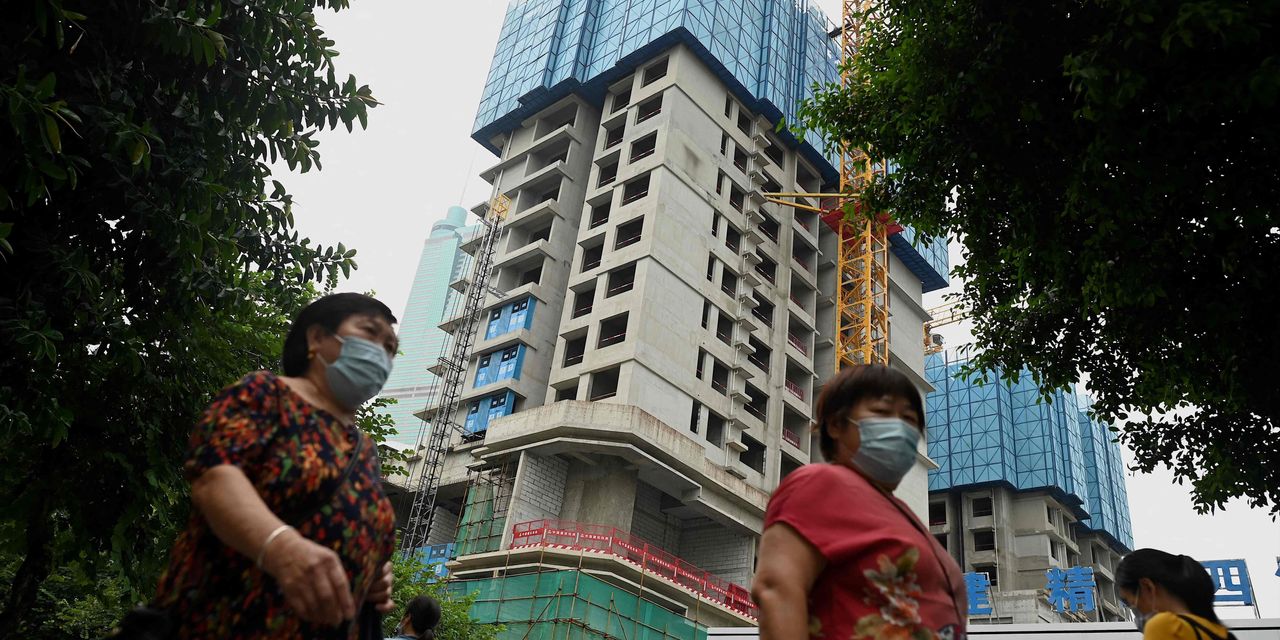
The uproar surrounding China’s beleaguered Evergrande Group, the world’s most indebted property concern, are distracting from China’s broader debt problem and slowing economic growth.
China’s overall debt was 270% of its GDP at the end of 2020, up from 247% a year earlier. Foreign debt reached US$2.4 trillion in 2020. Since 2008, Chinese borrowing, mainly by businesses and households, has risen by almost 100% of GDP and accounts for two-thirds of the global debt increase. Evergrande’s outstanding debt of more than $300 billion constitutes less than 1% of China’s total debt.
Over the past 13 years, China’s growth has been driven by massive government sponsored infrastructure and property investment funded by debt, primarily supplied by government owned banks. Some of this debt is tied up in low-returning or unproductive assets incapable of servicing the borrowings.
This problem is not new. In 1993, 1998 and 2004, China successfully negotiated episodes of excessive lending to provincial governments and State Owned Enterprises (“SOEs”).
But this time really is different. The amounts involved are larger. The debt is private. Foreign debt is significant.
Traditionally, China’s magical debt-shrinking machine involves lenders transferring non-performing loans to asset management companies (effectively bad banks) in exchange for government-guaranteed bonds. Then, time and strong economic growth resolves the problem. Rising GDP boosts asset values, proportionately reducing the level of debt and non-performing loans in percentage terms to manageable levels.
But that time is now over. The required growth rates are now unattainable. At China’s current debt levels, which are rising around 12%-15% annually, growth of 6% is required to simply keep debt to GDP stable. The problem is complicated by the Chinese government’s determination to slow borrowing, which is a driver of growth. Growing trade tensions with the U.S. and denial of access to essential technology also constrain Chinese growth.
China’s financial flexibility is overstated. Large foreign exchange reserves ignore accumulated investment liabilities. Based on International Monetary Fund (IMF) criteria, China needs around $3 trillion — roughly current levels. The amounts needed to recapitalize the financial system and restructure the economy would reduce them well below the IMF minimum. Given significant illiquid investments, such as Belt and Road Initiative loans and large holdings of U.S. Treasurys, which would be difficult to sell and create unwanted appreciation of the yuan CNYUSD, , the realization of reserves may be difficult in any case.
The policy challenge is large. The current crisis was triggered by attempts to restrict lending to property developers. Dealing with the legacy of poor quality loans now risks setting off a debt crisis and strangling economic activity. But not addressing the issues will result in a bigger future problem and reckoning.
Fear of social disorder and financial instability mean government intervention is likely. With property constituting 60%-75% of China’s household wealth, it will encourage SOEs or others to take over projects to rescue buyers of unfinished apartments and suppliers. Shareholders and lenders will suffer losses.
Major Chinese lenders will be protected. The country’s central bank will supply liquidity and keep rates low. Domestic savers may lose money on complex wealth management products. The greater penalty will be from artificially low or negative real rates. The transition from investment to consumption as China’s primary economic driver will be delayed.
Global impact
Foreign investors are vulnerable. Prices of international bonds issued by Chinese property firms have fallen substantially. Ongoing economic disputes with the West, less dependence on foreign capital and decreased Chinese desire for economic engagement mean default on overseas borrowings is no longer taboo.
Moreover, international lenders may be unable to access prime assets and cash flow due to convoluted lending structures, resulting in material losses. After years of berating China for ignoring market disciplines, foreigners may suffer the consequences of their own advice.
Given that the Chinese economy constitutes about 30%-40% of global growth, the slowdown will also affect China’s trading partners.
Investors in Chinese stocks and bonds, either directly or through emerging-market ETFs or funds, are at risk. U.S. and European company earnings rely on Chinese markets for growth, leaving export-oriented business, such as automobiles, industrial machinery, aerospace, technology and luxury products, exposed.
Commodity and raw materials producers such as Australia and Brazil, and resource businesses, all of which have benefited from Chinese demand, will see lower incomes. Investors in emerging-market stocks and bonds, which also have benefitted from Chinese trade and investment, are likely to see knock-on effects.
Clearly, what happens in China is unlikely to stay in China.
Satyajit Das is a former banker. He is the author of “A Banquet of Consequences – Reloaded: How we got into this mess we’re in and why we need to act now.” (Penguin Random House Australia, 2021).
More: China’s economic growth weakens amid construction slowdown
Also read: The U.S. is playing a game of COVID denial and the financial cost to Americans is dangerously high








